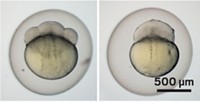Advertisement
Grab your lab coat. Let's get started
Welcome!
Welcome!
Create an account below to get 6 C&EN articles per month, receive newsletters and more - all free.
It seems this is your first time logging in online. Please enter the following information to continue.
As an ACS member you automatically get access to this site. All we need is few more details to create your reading experience.
Not you? Sign in with a different account.
Not you? Sign in with a different account.
ERROR 1
ERROR 1
ERROR 2
ERROR 2
ERROR 2
ERROR 2
ERROR 2
Password and Confirm password must match.
If you have an ACS member number, please enter it here so we can link this account to your membership. (optional)
ERROR 2
ACS values your privacy. By submitting your information, you are gaining access to C&EN and subscribing to our weekly newsletter. We use the information you provide to make your reading experience better, and we will never sell your data to third party members.
Biological Chemistry
Mice see red like never before
March 26, 2007
| A version of this story appeared in
Volume 85, Issue 13
By inserting a human gene into mice, neuroscientist Gerald H. Jacobs of the University of California, Santa Barbara, and colleagues have created mice that can see a broader range of color (Science 2007, 315, 1723). This work sheds some light on the evolutionary process of color vision and potentially other sensory systems. Humans have three kinds of photopigment cone cells in the retina, and the brain notes which cones respond in perceiving color. Mouse eyes naturally contain only blue and green photopigment cells. Jacobs and colleagues essentially replicated the evolution of primate trichromacy by inserting the human gene for red photopigment into female mice. The researchers wondered if just adding the gene would change mouse vision immediately or if additional nervous system changes were needed. They got their answer when the genetically altered mice approached three panels, of which two were the same color and one was a different color (shown). The trained mice picked the odd-colored panel in 80% of the trials, a success rate that would be highly improbable without the genetic enhancement.





Join the conversation
Contact the reporter
Submit a Letter to the Editor for publication
Engage with us on Twitter